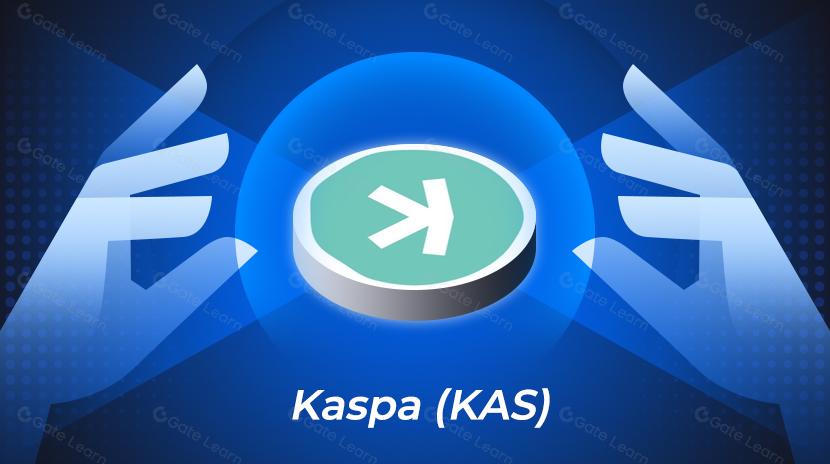Elixir (ELX) — Jaringan Likuiditas Terdesentralisasi
Apa itu Elixir?
Elixir (ELX) adalah jaringan likuiditas terdesentralisasi modular yang mengintegrasikan likuiditas dari protokol DeFi dan mengoptimalkan lingkungan perdagangan untuk mengatasi masalah seperti likuiditas yang terfragmentasi, slippage tinggi, dan spread yang luas di bursa terdesentralisasi tradisional (DEXs). Inti nya menggunakan arsitektur modular dan mekanisme konsensus Delegated Proof of Stake (DPoS), memungkinkan pengguna untuk menyediakan likuiditas langsung ke buku pesanan dalam jaringan berkapasitas tinggi, sehingga membangun pasar yang dalam.
Saat ini, Elixir telah membentuk integrasi asli dengan lebih dari 30 DEX, mencakup beberapa blockchain utama seperti Ethereum dan Solana. Kecepatan pembangkitan blok jaringannya konsisten di bawah 1 detik, dengan lebih dari 20.000 node validator yang didirikan secara global dan total nilai terkunci (TVL) melebihi $300 juta.
Gate.com Sekarang Mendukung Perdagangan Spot $ELX
Mengapa Elixir Diperlukan?
Elixir lahir dari kebutuhan mendesak untuk mengatasi fragmentasi likuiditas dan bottlenecks efisiensi dalam ekosistem keuangan terdesentralisasi (DeFi) saat ini. Saat lanskap multi-rantai dari blockchain semakin dalam, aset tersebar di berbagai jaringan, menyebabkan biaya tinggi dan jalur yang kompleks untuk transaksi lintas-rantai, memaksa pengguna bergantung pada protokol penghubung yang lebih berisiko. Sementara itu, DEX tradisional terbatas oleh likuiditas satu rantai, menghasilkan slippage tinggi dan penundaan perdagangan yang signifikan, terutama untuk aset ekor panjang, yang menghambat perkembangan on-chain.
Elixir membangun jaringan likuiditas terdesentralisasi yang menggabungkan likuiditas dari lebih dari 30 buku pesanan protokol, membentuk kolam yang dalam yang secara signifikan mengurangi biaya perdagangan dan mengoptimalkan efisiensi eksekusi. Arsitektur modularnya mendukung interoperabilitas lintas rantai, memberikan dukungan likuiditas yang lancar untuk aset lintas rantai. Selain itu, untuk peserta keuangan tradisional, Elixir telah meluncurkan deUSD (USD Terdesentralisasi), dolar sintetis yang sepenuhnya dikolateralisasi dan menghasilkan imbal hasil, meruntuhkan hambatan antara keuangan tradisional dan DeFi. deUSD dikolateralisasi oleh aset dunia nyata (RWA), menyediakan titik masuk yang sesuai bagi pengguna institusi, dan dapat menurunkan tingkat bunga stablecoin melalui arbitrase hasil obligasi pemerintah dan peminjaman on-chain, menarik potensi modal tradisional senilai miliaran.
Arsitektur Jaringan Elixir
Arsitektur jaringan Elixir dibagi menjadi sistem off-chain dan on-chain:
- Sistem Off-Chain
Sumber data terdistribusi menangkap buku pesanan, harga, dan informasi pasar lainnya dari beberapa pertukaran secara real-time. Sebuah aggregator data membersihkan dan menstandarisasi data multi-sumber ini, menggabungkannya ke dalam kerangka data deterministik.
Validator kemudian menerima data dan bertanggung jawab untuk memverifikasi keakuratannya. Jaringan validator beroperasi melalui Delegated Proof of Stake (DPoS), di mana setiap node validator harus melakukan staking token ELX untuk mendapatkan hak validasi dan mencapai konsensus atas validitas data melalui pemungutan suara mayoritas 2/3.
Node relay melakukan verifikasi multi-tanda tangan pada proposal pesanan terenkripsi, memastikan bahwa instruksi transaksi sesuai dengan aturan yang telah ditetapkan sebelum aman ditandatangani dan didistribusikan ke pertukaran target.
- Sistem On-Chain
Node audit, pengumpul data, dan node relay menerima paket data off-chain dan proposal urutan, secara otomatis memverifikasi logika transaksi dan kepatuhan melalui kontrak pintar sebelum mengirimkannya ke pengendali. Kontrak pengendali berfungsi sebagai modul inti, mengelola staking, delegasi, imbalan, hukuman, dan pengurangan, dan dapat mengaktifkan konsensus 2/3 dalam set validator aktif dalam kasus perselisihan, memungkinkan pengurangan validator jahat.
Arsitektur jaringan Elixir, melalui kolaborasi desain off-chain dan on-chain, seimbang antara kebutuhan pemrosesan yang efisien dan verifikasi yang aman. Komponen intinya memiliki pembagian tugas yang jelas dan proses yang terdefinisi dengan baik, dengan jaringan validator mencapai desentralisasi dan konsensus melalui mekanisme DPoS, infrastruktur relay memastikan integritas dan ketidakubahannya data dan transaksi, sementara node audit dan pengontrol menyediakan jaminan keamanan tambahan dan sistem reward/pelanggaran.
deUSD
deUSD adalah komponen inti dari ekosistem Elixir. Ini adalah dolar sintetis yang sepenuhnya terjaminkan, menghasilkan imbal hasil, terbentuk dari kombinasi stETH (posisi jaminan delta-netral yang dibuat dengan cara menjual ETH dengan nilai yang setara) dan protokol T-Bill USDS dari MakerDAO, menghasilkan dolar sintetis yang stabil dan menghasilkan imbal hasil.
Dibandingkan dengan bentuk aset stabil sintetis lainnya, deUSD memiliki beberapa keunggulan, termasuk:
- Izin Terdesentralisasi: Jaringan Elixir mendukung pencetakan dan penebusan terdesentralisasi melalui bukti eksekusi yang dapat diverifikasi dan kode sumber terbuka, menghilangkan kebutuhan akan perantara terpusat yang biasanya. Jaringan akan memungkinkan siapa pun untuk dengan bebas mencetak atau menebus deUSD secara langsung di rantai, yang lebih meningkatkan sifat terdesentralisasinya.
- Pengendalian Risiko: Melalui Jaringan Elixir, deUSD dapat mengurangi risiko dasar dalam lingkungan tingkat pendanaan negatif dengan menyesuaikan dukungan jaminan secara dinamis, meningkatkan ketahanan dan stabilitas sistem, dan menghindari spiral kematian yang disebabkan oleh jaminan yang tidak mencukupi, mirip dengan insiden LUNA/UST pada tahun 2022.
- Inti Ekosistem: deUSD akan menjadi agunan pilihan di dalam ekosistem Elixir, dengan enam pertukaran buku pesanan terdesentralisasi (DEX) teratas menerimanya sebagai agunan, sehingga meningkatkan utilitas dan likuiditasnya.
Elixir telah mengumumkan kemitraan dengan beberapa perusahaan keuangan tradisional yang mengelola lebih dari $10 triliun aset, membuat deUSD menjadi saluran asli bagi dana ter-tokenisasi ini untuk masuk ke DeFi. Ini menyediakan jalur bagi pemegang aset fisik kelas institusional untuk memasuki ruang DeFi untuk pertama kalinya tanpa mengubah profil risiko aset mereka yang sudah ada.
Latar Belakang Pendanaan
- Maret 2024: Elixir mengumumkan penyelesaian putaran pendanaan Seri B sebesar $8 juta, yang dipimpin bersama oleh Mysten Labs dan Maelstrom, dengan partisipasi dari Manifold, Arthur Hayes, Amber Group, GSR, Flowdesk, dan lainnya.
- Oktober 2023: Elixir mengumumkan penyelesaian putaran pendanaan Seri A sebesar $7,5 juta, dipimpin oleh Hack VC, dengan partisipasi dari NGC Ventures, AngelList Ventures, Bloccelerate, dan lainnya.
- Januari 2023: Elixir mengumumkan penyelesaian putaran pendanaan awal sebesar $2,1 juta, dengan partisipasi dari FalconX, Commonwealth, OP Crypto, ChapterOne, dan pendiri BitMEX Arthur Hayes, di antara yang lainnya.
Tokenomika Elixir
Token Utilitas
ELX adalah token utilitas asli dan token tata kelola ekosistem Elixir:
- Staking: Pemegang dapat melakukan staking $ELX untuk berpartisipasi dalam mekanisme konsensus DPoS, mendukung validator dalam menjalankan jaringan dan memastikan transparansi data transaksi dan keamanan jaringan.
- Governance: Pemegang $ELX dapat berpartisipasi dalam tata kelola DAO, memutuskan tentang peningkatan protokol, penyesuaian parameter ekonomi, dan pengelolaan dana ekologis.
- Insentif Likuiditas: $ELX digunakan untuk insentif likuiditas dalam bursa perdagangan DEX, meningkatkan kedalaman perdagangan dan mengurangi ketergantungan pada pembuat pasar terpusat.
Pembagian Token
Informasi tokenomics resmi belum diungkapkan total pasokan token, tapi proyek saat ini telah mendistribusikan 1 miliar token, dengan rasio sirkulasi awal sebesar 16.5%. Distribusi pasokan token adalah sebagai berikut:
- Komunitas: 41%
- Yayasan DAO: 22%
- Likuiditas: 3%
- Investor: 15%
- Kontributor Inti: 19%

Artikel Terkait

Laporan Penelitian Uniswap (UNI)

Satoshi Nakamoto adalah siapa?

Laporan Penelitian Immutable X (IMX)

Laporan Penelitian Kaspa (KAS)

Laporan Penelitian IO.NET (IO)


